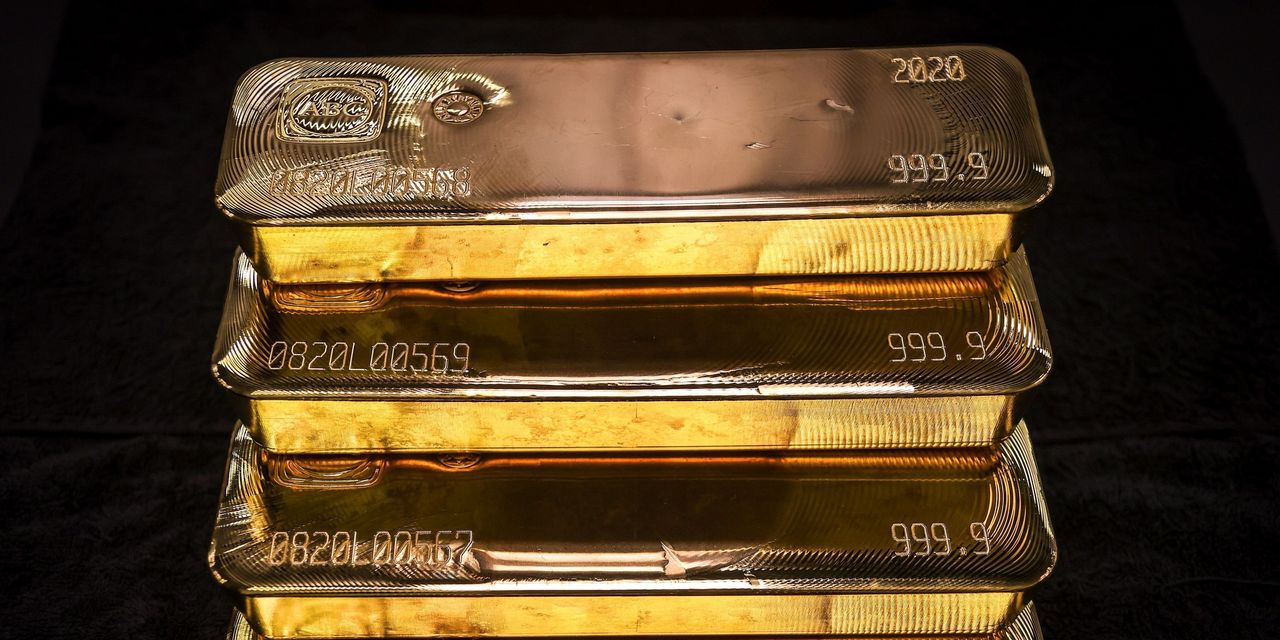Gold futures ended slightly higher on Friday as investors awaited next week’s monthly reading on the U.S. consumer price index, which is likely to be a key factor in the Federal Reserve’s interest-rate decision at its meeting later this month.
Prices for the precious metal, however, suffered a weekly loss in the face of overall strength in Treasury yields and the U.S. dollar.
Price action
-
Gold for December delivery
GC00,
-0.01% GCZ23,
-0.01%
rose 20 cents, or less than 0.1%, to settle at $1,942.70 an ounce on Comex. Prices based on the most-active contract posted a 1.2% weekly fall, FactSet data show. -
December silver
SIZ23,
+0.09%
shed 7 cents, or 0.3%, to settle at $23.17 for a weekly decline of nearly 5.7%. That was the largest weekly percentage fall since the week ended June 23. -
December copper
HGZ23,
-0.05%
fell 1.2% to $3.72 a pound for a weekly loss of 3.5%. -
Platinum for October delivery
PLV23,
+0.20%
settled at $894.80 an ounce, down 1.6% for the session and posting a weekly decline of 7.6%. December palladium
PAZ23,
+0.65%
lost 1.9% to end at $1,192.30 an ounce, down 2.9% for the week. See: Why platinum is forecast to see its largest-ever annual supply deficit
Market drivers
Gold ended Friday just a few cents higher after declines that pulled prices to their lowest settlement in nearly two weeks on Thursday.
The precious metal had been under renewed selling pressure this week, “largely thanks to the strengthening U.S dollar and rising Treasury yields,” said David Russell, chief executive officer of GoldCore. “Improved U.S. data and comments from FOMC members that suggested rates could stay higher, for longer, fed more fuel to this dynamic.”
Rising yields can be a negative for gold, raising the opportunity cost of holding a nonyielding asset, while a stronger dollar makes commodities priced in the unit more expensive to users of other currencies.
“The latest U.S. service-sector activity data among other releases have supported the argument around the Fed having headroom to hike one more time,” Lukman Otunuga, manager, market analysis at FXTM, told MarketWatch. With the dollar and Treasury yields “likely to rise on growing Fed hike bets, this may keep the gold prices capped moving forward.”
Still, Rupert Rowling, market analyst at Kinesis Money pointed out that while gold has pulled back from a high above $2,000 an ounce seen earlier this year, the $1,920 level remains very high historically.
“The key factor that has kept gold so buoyant despite rising interest rates has been the fragility of market confidence but the longer the economic data continues to show that recession fears are overdone, the more trading activity will shift towards riskier assets and away from the ultimate haven asset in gold,” Rowling wrote in a Friday note.
In terms of what traders are most focused on, they are most likely looking out for the next U.S. data release, which is the CPI report due next Wednesday.
Gold traders will be looking to see if the CPI report adds to the picture that the U.S. economy “isn’t struggling with rates at these levels, and that inflation is responding to monetary policy,” GoldCore’s Russell told MarketWatch. See the U.S. economic calendar.
For the medium-to-long term, GoldCore remains bullish on gold’s performance, he said.
“In the near future, a strong dollar for the global economy means increased levels of inflation. In the medium-to-long term, it means more central bank intervention and further devaluation of currencies,” said Russell. “It is such an environment when gold comes into its own.”
Read the full article here













Leave a Reply